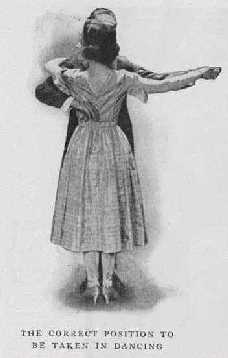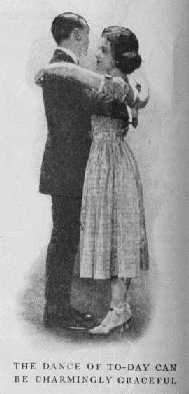 We have all been taught to believe that "music soothes the savage breast," but we
have never stopped to consider that an entirely different type of music might
invoke savage instincts. We have been content to accept all kinds of music, and
to admit music in all its phases into our homes, simply because it was music. It
is true that frequently father and mother have preferred some old favorite song
or dance, or some aria from opera, to the last "best seller" which has found its
way into the home circle; but, after all, young people must be entertained and
amused, and even if the old-fashioned parents did not enjoy the dance music of
the day, they felt it could really do no harm, because it was music.
We have all been taught to believe that "music soothes the savage breast," but we
have never stopped to consider that an entirely different type of music might
invoke savage instincts. We have been content to accept all kinds of music, and
to admit music in all its phases into our homes, simply because it was music. It
is true that frequently father and mother have preferred some old favorite song
or dance, or some aria from opera, to the last "best seller" which has found its
way into the home circle; but, after all, young people must be entertained and
amused, and even if the old-fashioned parents did not enjoy the dance music of
the day, they felt it could really do no harm, because it was music.
 Therefore, it is somewhat of a rude awakening for many of these parents to find
that America is facing a most serious situation regarding its popular music.
Welfare workers tell us that never in the history of our land have there been
such immoral conditions among our young people, and in the surveys made by many
organizations regarding these conditions, the blame is laid on jazz music and its
evil influence on the young people of to-day. Never before have such outrageous
dances been permitted in private as well as public ballrooms, and never has there
been used for the accompaniment of the dance such a strange combination of tone
and rhythm as that produced by the dance orchestras of to-day.
Therefore, it is somewhat of a rude awakening for many of these parents to find
that America is facing a most serious situation regarding its popular music.
Welfare workers tell us that never in the history of our land have there been
such immoral conditions among our young people, and in the surveys made by many
organizations regarding these conditions, the blame is laid on jazz music and its
evil influence on the young people of to-day. Never before have such outrageous
dances been permitted in private as well as public ballrooms, and never has there
been used for the accompaniment of the dance such a strange combination of tone
and rhythm as that produced by the dance orchestras of to-day.
Certainly, if this music is in any way responsible for the condition and for the immoral acts which can be traced to the influence of these dances, then it is high time that the question should be raised: "Can music ever be an influence for evil?"